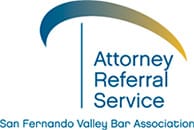
“Do I need a lawyer?”
We hear this question pretty frequently from residents and business owners in the Los Angeles area so we put together a quick overview covering some of the benefits of working with a trained professional when facing divorce, bankruptcy, or criminal charges.
Please take a look and consider the situation before deciding to represent yourself.
It may just mean the difference you need to ensure the best possible outcome.
Let’s get started.
Should you represent yourself?
In most situations, you can represent yourself, although many companies like banks and insurance companies have mandatory arbitration or mediation clauses in the contracts you sign. These provisions mean you have to solve disputes through a third party out-of-court.
But in court cases where representation is possible, the other question is, “Should you represent yourself?
You might have a certain type of small claim that you want to make. Or you may want an uncontested divorce. Or maybe there is an administrative legal issue.
Usually, these are the simpler legal cases where there are fewer conflicts and less severe penalties involved. The claim is between $25,000 and $100,000.
You may want to represent yourself in a small civil suit rather than undertake the cost of a full-time attorney.
Or you may want to work with someone else other than a lawyer.
if you decide to handle things yourself, there are still enough issues and concerns to warrant at least some discussion with a lawyer. You would be wise to have a legal consultant to make sure you are doing things the right way.
Getting legal advice on strategy and tactics may cost you a little money, but not nearly the amount of having a full-time attorney handling your case.
The idea is to find a lawyer, not just any lawyer, but one who is experienced in the type of issues involved in your lawsuit.
Conducting a personal injury lawsuit can be very different than conducting a lawsuit based on a contractual dispute.
What is your area of need?
There are required steps to follow and forms to file in just about every area of law. How you proceed may determine the success of your case. There are also red flags and potential obstacles to be aware of along the way.
Divorce
There are some traditions that guide usual court outcomes. For example, in a divorce case, usually the longer the marriage, the more likely you will need a lawyer. The amount of alimony or child supports a spouse is entitled to increases quite a bit after 7-10 years of marriage. So if the marriage has lasted this long, it is advisable to have an attorney represent you.
If the marriage is fairly recent and there is no child custody argument, you may want to consider representing yourself, but it is still advisable to seek legal advice.
If there are any premarital properties or assets involved, this is another area where legal advice should be sought.
If you and your spouse have agreed to dissolve the marriage in an uncontested way, you still could run into trouble when discussing the division of assets and responsibilities.
On the other hand, if it is a completely “no fault” divorce, and everything has been agreed to including the division of assets and responsibilities, it is possible that there will be no court hearing or appearance at all.
Bankruptcy
You can consider representing yourself in filing for bankruptcy if you have limited assets and no creditors claiming fraud. If you file for “Chapter 7Bankruptcy,” chances are your case will not be dismissed.
However, if you own a business and have significant assets, you may want to think about a lawyer in filing for “Chapter 13.”
You should be aware that a bankruptcy trustee is appointed to oversee your case and look for any potential problems like fraud or claims of fraud. Any errors on your part could lead to possible civil or criminal charges against you.
Criminal court
If you are arrested for a crime, you have a right to an attorney. If you can’t afford a criminal defense attorney, the court will appoint a Public Defender.
The Public Defender is better than representing yourself. The Defender has legal experience but does not have a great deal of time to spend on your behalf.
Representing yourself in a criminal case can be difficult and can add to your problems. For instance, if you are at an arraignment hearing alone, you could be taken into custody right away with a high bail set.
If you are unaware of legal terminology, you may test the patience of the judge.
Since a judge prefers legal representation, without it, you will not get priority treatment for hearings. You may be put at the “end of the line” and have to wait all day. If you don’t have the police report, the delay could be longer.
You must ask for permission to represent yourself, and the judge may ask you some questions to show you know what you are getting into and understand the nature of the court process.
The judge may also appoint a standby attorney to step in and help when needed.
You will have to make sure you do whatever research is needed and you follow appropriate protocols. It is much safer for you to have your own private criminal attorney working full-time to build your case.
How should you act in court?
Whether representing yourself or working with an attorney, there are things you should be aware of to give you a better chance for a positive outcome.
Preparation for a court appearance starts with your own appearance. How you dress can have an effect on how you are perceived.
You should practice what you are going to say. If you have a testimony to give, you should practice that as well as prepare for any questions you may be asked.
Be mindful of what you are allowed to carry in your pockets or purse. There are some prohibited items. An attorney could advise you on matters like these.
You should bring evidentiary documents you need as originals, not photocopies because they could be altered and challenged.
There are so many things to be cognizant of in a criminal case. You should take notes on testimony and be aware of what the other side is saying, and be ready to challenge or rebut anything controversial.
Knowing legal terms, how to address the judge, what are acceptable responses to questions, how to dress, where to sit, what documents are needed, what witnesses should be called, and a lot more – all these need to be considered to help you win your case.
Having an attorney makes it so much easier. The best way to find that attorney is through a qualified and certified Attorney Referral Service (ARS).
The ARS will listen to your problem and advise you on whether it is a good idea to represent yourself, and if so, how you might want to get some legal advice on how to proceed.
The ARS can also recommend an attorney who can work as an advisor or standby counsel who can support you as needed. This allows you to do much of the work involved in building your case but gives you the safety of having that legal backup that is so important.
How do you get started with a lawyer?
If you do choose to work with a lawyer, how do you proceed? First of all, contact an attorney early to take advantage of any free or low-cost advice and to give the attorney time to get started on your case.
It may not be possible for the lawyer to give you all the services you want within the budget you have. But many lawyers offer unbundled services or sliding-scale fees. Or they can refer you to other lawyers who can work within your budget.
Yes, you can represent yourself. But the best way to minimize your risk is with legal counsel to get you started and to stand by you when needed.
